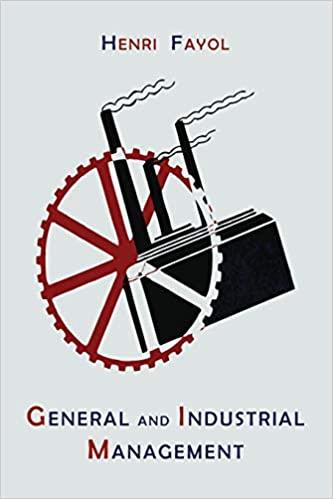Question
Case C : Woolworths corporate responsibility strategy The Woolworths Group ( woolworthsgroup.com.au ) is an Australian conglomerate founded in 1924. Its headquarters are in Bella
Case C: Woolworths corporate responsibility strategy
The Woolworths Group (woolworthsgroup.com.au) is an Australian conglomerate founded in 1924. Its headquarters are in Bella Vista, New South Wales. Colloquially known as Woolies, the company has extensive retail interests in the Oceania region, particularly Australia and New Zealand, but also has a foothold in India. The Woolworths Group consists of three core businesses (Woolworths Food Group, Endeavour Drinks and Portfolio Businesses), employs more than 200 000 people and has revenue of about A$60 billion (US$46 billion). Across the three core businesses, Woolworths has 13 different business subsidiaries.
Integrating these 13 subsidiaries into a corporate social responsibility program is a challenge for a company with so many employees and diverse interests. To accomplish its objective, Woolworths Groups Corporate Responsibility Strategy 2020 identifies 20 corporate responsibility and sustainability goals that the company plans to implement by the year 2020. These goals cover a broad range of stakeholders (e.g. customers, team members, suppliers and local communities in which Woolworths operates). The strategy is based on a framework of People-Planet-Prosperity.
The focus on People is about encouraging diversity. The target goals include striving for gender equity by having at least 40 per cent of executive and senior manager positions held by women; and having no salary wage gap between male and female employees at equivalent positions in all levels of the company. And rooted in Australian business, the company is embracing diversity by increasing the number of Indigenous employees in line with the companys stated commitments under the Australian federal governments Employment Parity Initiative.
The focus on the Planet includes two major initiatives. First, Woolworths is working towards zero food waste going into landfill. According to the US Environmental Protection Agency, 20 per cent of what goes into municipal landfill is food. Second, Woolworths is trying to reduce its carbon emissions or footprint by 10 per cent. Many of our daily activities (e.g. using electricity, driving a car, disposing of waste) cause greenhouse gas emissions. A carbon footprint is defined as the total set of greenhouse gas emissions caused by an individual, an event, an organisation or a product, and it is expressed as a carbon dioxide equivalent. Such emissions trap heat in the atmosphere, which according to most scientists contributes to disruptive climate change.
The focus on Prosperity is founded on trusted relationships. Woolworths target is to achieve a top quartile ranking in how the business engages fairly and equitably with its suppliers, as measured by independent supplier surveys. Inspiration is also built into Prosperity in the form of the company implementing activities to inspire customers to consume its products in a healthy, sustainable way. The most transparent Prosperity initiative, though, is to invest the equivalent of 1 per cent of total earnings in community partnerships and programs.
Woolworths People-Planet-Prosperity strategy drives how the company does business. The strategy states that Woolworths is committed to hard work and that its integrity is resolute. The foundation for this is a down-to-earth culture and family-friendly values. Every aspect of Woolworths business exists for the purpose of making customers lives simpler, easier and better. Underpinning the companys operations are working relationships built on mutual trust with suppliers. More than 80 per cent of the companys suppliers have been its strategic partners for a decade or longer.
References:
D. Sotiropoulos, Woolworths sets sights on sustainability, Inside Retail (Australia), 14 February 2017
J. Smith, How Woolworths is building resilience in Its food supply chain, Sustainable Brands, 11 April 2016
J. LaChappelle, Woolworths sees benefits of working with sustainability standards, Iseal Alliance, 19 September 2014
Woolworths Groups Corporate Responsibility Strategy 2020, accessed via www.woolworthsgroup.com.au/page/community-and-responsibility/group-responsibility
Case Questions: Answer all questions associated with Case B. Each question is the same value. Total 20 points for this case.
1. What challenges do you think a company like Woolworths Group faces when developing and implementing a company-wide corporate social responsibility strategy that takes into account more than 200 000 employees, diverse interests and stakeholders?
2. The focus on People is about encouraging diversity. One goal is to increase the number of Indigenous employees in line with the companys stated commitments under the Employment Parity Initiative. Does such a diversity approach enhance the companys sustainability strategy? Explain your answer.
3. Woolworths Group is trying to reduce its carbon emissions or footprint by 10 per cent. Based on where the world is now, is 10 per cent enough of a reduction? Perhaps global warming isnt real, despite what the vast majority of scientists say: what do you think?
4. Woolworths targets are to achieve a top quartile ranking in how the business engages fairly and equitably with its suppliers. How do supplier relationships and fairness in dealing with suppliers relate to sustainability and doing good for society (and the company)?
give references also????
Step by Step Solution
There are 3 Steps involved in it
Step: 1

Get Instant Access to Expert-Tailored Solutions
See step-by-step solutions with expert insights and AI powered tools for academic success
Step: 2

Step: 3

Ace Your Homework with AI
Get the answers you need in no time with our AI-driven, step-by-step assistance
Get Started


